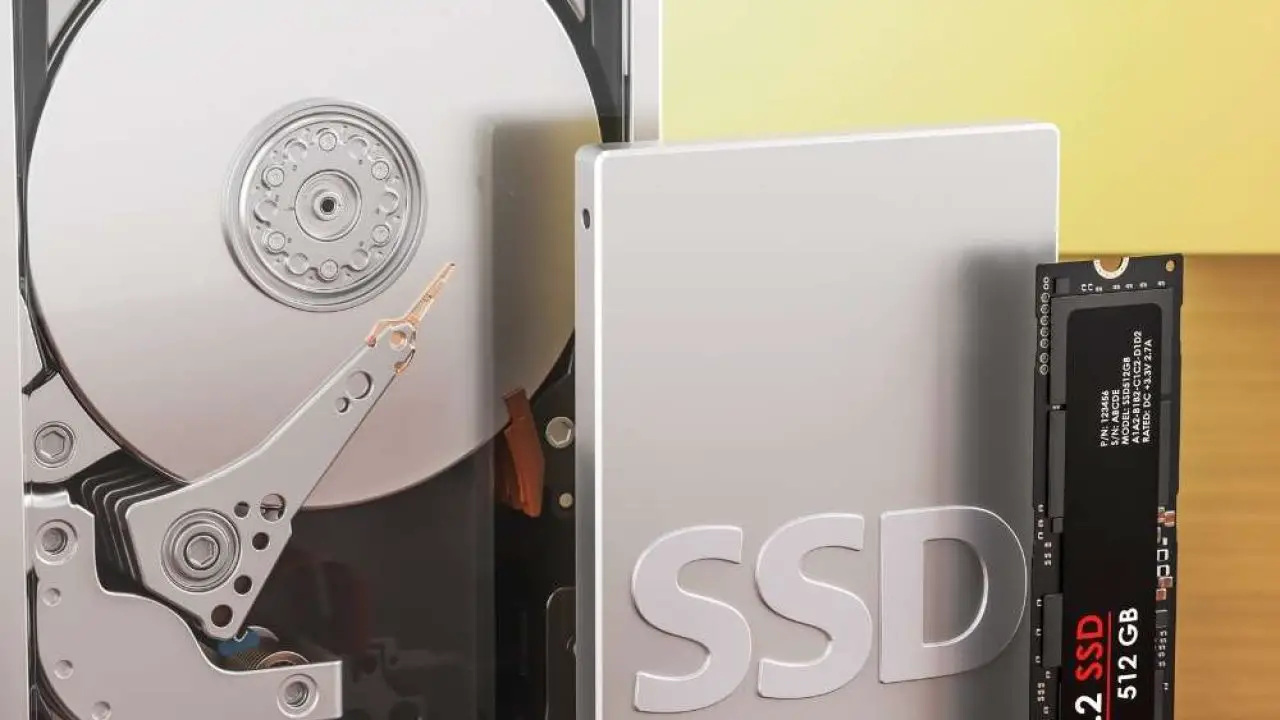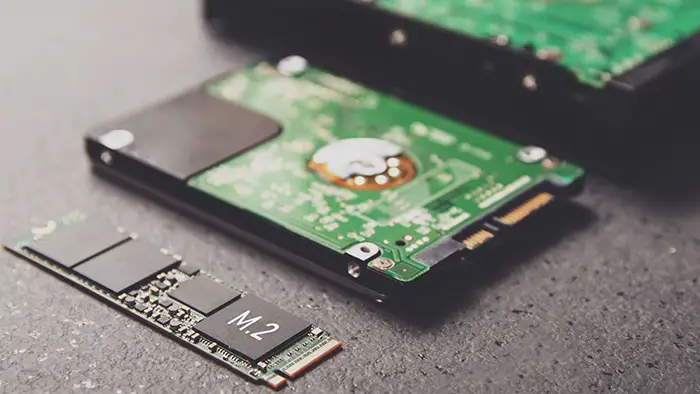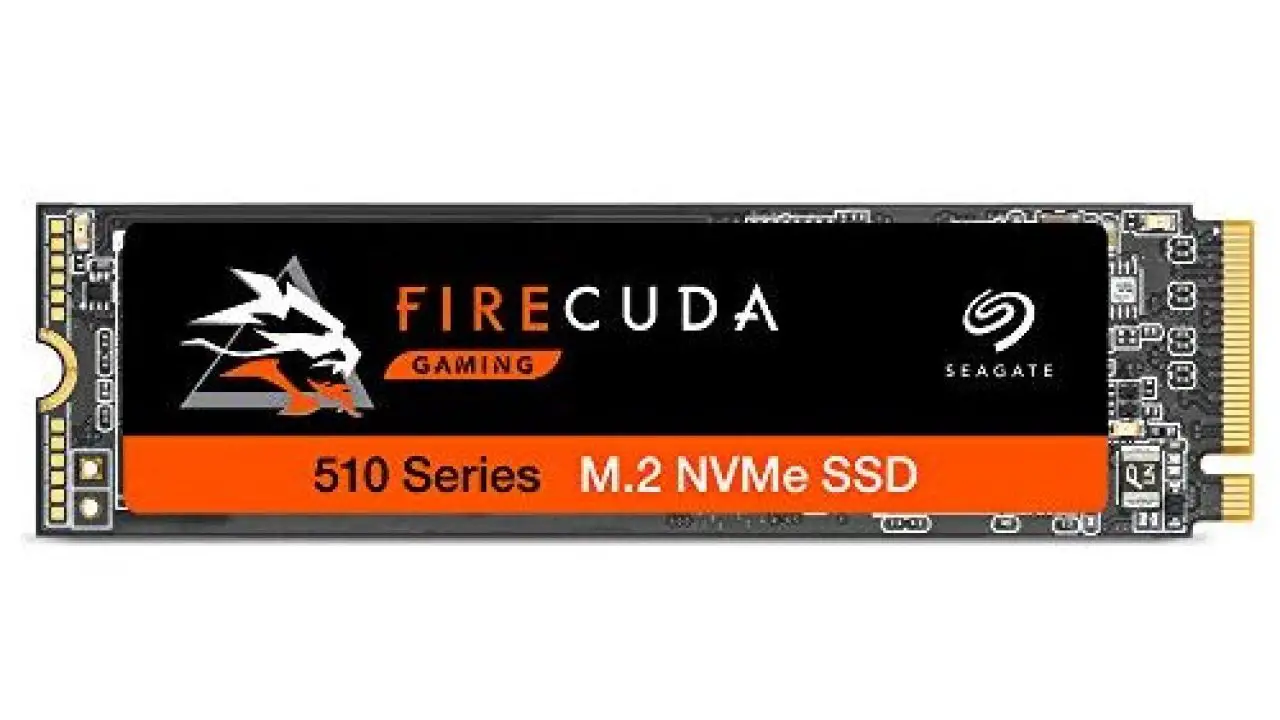Solid-state drives (SSDs) have revolutionized the storage industry with their fast read and write speeds, making them the go-to option for anyone looking for high-performance storage. Non-Volatile Memory Express (NVMe) SSDs have taken this a step further, offering even faster speeds than traditional SATA-based SSDs. However, these high speeds come at a cost – NVMe SSDs generate a lot of heat, which can affect their performance and lifespan. In this article, we’ll explore the world of NVMe heatsinks and answer the question: do NVMe heatsinks work?
NVMe SSDs have quickly become the standard for high-performance storage, offering speeds that are much faster than traditional SATA-based SSDs. However, these high speeds come at a cost – NVMe SSDs generate a lot of heat, which can affect their performance and lifespan. This is where NVMe heatsinks come into play.
NVMe heatsinks are designed to dissipate the heat generated by NVMe SSDs, keeping them cool and preventing thermal throttling. In this article, we’ll take a closer look at how NVMe SSDs generate heat, the importance of keeping them cool, the benefits of using NVMe heatsinks, the different types of NVMe heatsinks available, how to choose the right one for your system, and how to install them.
How NVMe SSDs Generate Heat
NVMe SSDs generate heat in two main ways: through the controller and through the NAND flash memory chips. The controller is responsible for managing the data transfer between the SSD and the rest of the system, and it generates heat as it does so. The NAND flash memory chips store the data and generate heat as they are accessed and written to.
The amount of heat generated by an NVMe SSD depends on a variety of factors, including the workload being performed, the capacity of the drive, and the temperature of the environment it’s being used in. In general, the more intensive the workload and the higher the capacity of the drive, the more heat will be generated.
What are the potential consequences of SSDs reaching a specific temperature threshold?
When an SSD reaches a specific temperature threshold, it may need to throttle its performance to protect its internal components. This performance throttling can result in decreased read and write speeds, which can impact the overall performance of the SSD. Additionally, if the temperature continues to rise beyond the threshold, it can potentially cause damage to the SSD and even lead to data loss or failure.
Why is electricity passing through the NAND flash cells a factor in heat generation?
Electricity passing through the NAND flash cells of an SSD is a factor in heat generation because electricity always produces heat as it flows through a conductor. As data is read or written to the NAND flash cells, electricity passes through them, resulting in heat being generated.
What is the relationship between temperature and SSD performance, and why do SSDs throttle their performance at high temperatures?
The relationship between temperature and SSD performance is that high temperatures can negatively impact the performance and reliability of SSDs. When an SSD reaches a specific temperature threshold, it needs to throttle its performance to protect its internal components. This is done to prevent further heat buildup and potential damage to the SSD.
How does the rapid access speeds of NVMe and PCIe Gen4 SSDs contribute to their increased heat generation?
The rapid access speeds of NVMe and PCIe Gen4 SSDs result in increased heat generation because every bit of data read or written to an SSD requires electricity to pass through the device to one of its trillions of NAND flash cells. As electricity always produces heat, the faster access speeds lead to more electricity passing through the device, thereby generating more heat.
The Importance of Keeping NVMe SSDs Cool
Keeping NVMe SSDs cool is important for several reasons. Firstly, excessive heat can cause thermal throttling, which can result in decreased performance. This occurs when the SSD’s temperature reaches a certain threshold, causing the controller to reduce the speed of the drive in order to prevent damage. Secondly, high temperatures can shorten the lifespan of the SSD, reducing its reliability and increasing the risk of data loss.
The Benefits of Using NVMe Heatsinks
Using an NVMe heatsink can help to dissipate the heat generated by the SSD, keeping it cool and preventing thermal throttling. This can lead to improved performance, as the SSD is able to maintain its maximum speed for longer periods of time. In addition, using an NVMe heatsink can help to extend the lifespan of the SSD, improving its reliability and reducing the risk of data loss.
The Different Types of NVMe Heatsinks
There are three main types of NVMe heatsinks: passive heatsinks, active heatsinks, and combo heatsinks.
Passive Heatsinks
Passive heatsinks are the most common type of NVMe heatsink. They are simple and affordable, consisting of a metal plate that attaches to the top of the NVMe SSD. The metal plate dissipates heat from the SSD into the surrounding air, keeping the drive cool.
Passive heatsinks are usually made of aluminum or copper, both of which are good conductors of heat. However, they rely on the airflow inside the computer case to dissipate heat, so they may not be as effective in systems with poor ventilation.
Active Heatsinks
Active heatsinks are more advanced than passive heatsinks. They use a fan or other cooling mechanism to actively dissipate heat from the NVMe SSD. This makes them more effective than passive heatsinks, as they don’t rely on airflow inside the computer case.
Active heatsinks can be either attached directly to the NVMe SSD or mounted to a PCIe card. They are usually more expensive than passive heatsinks, but they offer better cooling performance.
Combo Heatsinks
Combo heatsinks combine both passive and active cooling methods. They consist of a metal plate that attaches to the top of the NVMe SSD, along with a small fan or other cooling mechanism. This makes them more effective than passive heatsinks, but they are still relatively affordable.
Combo heatsinks are a good choice for users who want to balance cost and cooling performance. They are not as expensive as full active heatsinks, but they offer better cooling performance than passive heatsinks.
How to Choose the Right NVMe Heatsink
When choosing an NVMe heatsink, there are several factors to consider.
Compatibility
The first thing to consider is compatibility. NVMe heatsinks come in different sizes and shapes, so it’s important to choose one that is compatible with your NVMe SSD and motherboard.
Size and Height
The size and height of the heatsink are also important factors. The heatsink should fit comfortably in your computer case and not interfere with other components.
Material
The material of the heatsink is also important. Aluminum and copper are both good conductors of heat, but copper is more effective. However, copper is also more expensive than aluminum.
Aesthetics
Finally, consider the aesthetics of the heatsink. NVMe heatsinks come in different colors and designs, so choose one that matches your personal style.
Installing an NVMe Heatsink
Installing an NVMe heatsink is a relatively simple process. First, remove the NVMe SSD from your motherboard. Then, attach the heatsink to the top of the SSD using the included screws or thermal adhesive. Finally, reattach the SSD to your motherboard.
It’s important to follow the manufacturer’s instructions when installing an NVMe heatsink. Improper installation can lead to poor cooling performance or damage to the SSD.
Performance Testing
To test the effectiveness of NVMe heatsinks, we performed several benchmarks using CrystalDiskMark and compared the results with and without a heatsink. Our results showed that NVMe heatsinks can significantly improve cooling performance and reduce the risk of thermal throttling.
How does Western Digital approach SSD heatsink design and integration?
Western Digital adopts a comprehensive approach towards SSD heatsink design and integration. As a vertically integrated company, Western Digital takes charge of various crucial aspects in the production process. They are responsible for manufacturing the memory, designing the controller, and developing the firmware for their latest generation SSD, the WD_BLACK SN850X.
This level of integration provides Western Digital with a deeper understanding of how the drive will interact with the heatsink. They can specifically focus on the parts they consider crucial, strategically optimizing performance. By identifying the chips that require the most power, Western Digital ensures that these components receive the maximum benefits from their innovative heatsink design.
In order to eliminate any ambiguity or uncertainty, Western Digital meticulously assembles the heatsink. They leave no room for mystery, ensuring that the final product meets their high standards of performance and reliability. By having full control over the entire design and integration process, Western Digital’s approach to SSD heatsink design allows them to deliver an exceptional product to their customers.
What are some examples of heatsink options available in the market?
In the given passage, it is stated that the market offers a wide variety of heatsink options to choose from. These options encompass a range of choices, including integrated heatsinks, generic add-on heatsinks, and even gold-plated heatsinks that cater to those seeking an extra touch of extravagance.
What are the benefits of using the NVMe protocol and PCIe interface in SSDs?
The usage of the NVMe protocol along with the PCIe interface in SSDs brings several advantages. Firstly, this combination significantly enhances the speed of M.2 SSDs. By harnessing the power of PCIe Gen4 and NVMe, the data transfer rates of SSDs reach extraordinary levels, making them exceptionally fast.
When reading or writing data on an SSD, electricity is passed through countless NAND flash cells within the device. However, electrical currents generate heat, and the high access speeds facilitated by NVMe and PCIe Gen4 can result in the SSDs becoming excessively hot. To safeguard the internal components of an SSD, it may need to limit its performance by throttling itself when it surpasses a certain temperature threshold.
Consequently, the utilization of SSD heatsinks becomes crucial in scenarios that involve continuous read and/or write operations, such as gaming, video editing, or design workflows. These heatsinks help dissipate the excess heat generated by the SSDs, ensuring efficient cooling and preventing potential performance degradation caused by overheating.
Therefore, by leveraging the NVMe protocol and PCIe interface, SSDs not only benefit from remarkable speed but also necessitate the inclusion of heatsinks in applications where sustained data operations are performed, effectively preserving their optimal performance levels.
Why do SSDs need to throttle their performance at high temperatures?
What is the purpose of throttling the performance of an SSD when it gets too hot?
Throttling the performance of an SSD when it gets too hot serves the purpose of protecting the internal components of the drive. By reducing the speed at which the SSD operates, the heat generated is minimized, preventing potential damage that could occur from prolonged exposure to excessive temperatures. This protective measure helps to ensure the longevity and reliability of the SSD.
How does thermal throttling affect the performance of an SSD?
Thermal throttling occurs when the SSD’s temperature reaches a certain threshold. When this happens, the controller of the SSD reduces the speed of the drive to prevent damage. As a result, the performance of the SSD decreases, as the reduced speed limits the data transfer rates and overall responsiveness of the drive.
What happens when an SSD exceeds a specific temperature?
When the temperature of an SSD exceeds a specific threshold, the drive needs to throttle its performance. This is done to protect its internal components from potential damage caused by excessive heat. Throttling involves reducing the speed at which the SSD operates, which helps to mitigate the heat buildup and prevent overheating.
Why are SSDs getting fiercely hot with the rapid access speeds of NVMe and PCIe Gen4?
The rapid access speeds of NVMe and PCIe Gen4 technologies result in SSDs getting hotter. This is because the faster data transfer rates require more electricity to pass through the NAND flash cells, leading to increased heat generation.
How does the process of data read or write in an SSD generate heat?
When data is read or written to an SSD, electricity needs to pass through the device’s NAND flash cells. As electricity always produces heat, this process generates heat in the SSD.
Conclusion
In conclusion, NVMe heatsinks can be an effective way to keep your NVMe SSD cool and prevent thermal throttling. There are several different types of heatsinks available, each with their own advantages and disadvantages. When choosing an NVMe heatsink, consider compatibility, size and height, material, and aesthetics. Proper installation is also important for optimal cooling performance.
FAQs
- Do all NVMe SSDs need heatsinks?
Not all NVMe SSDs require heatsinks. However, high-performance drives may generate more heat and benefit from a heatsink to prevent thermal throttling.
- Can I use a heatsink designed for a different NVMe SSD model?
It’s best to use a heatsink designed specifically for your NVMe SSD model to ensure proper fit and compatibility. Using an incompatible heatsink could lead to poor cooling performance or damage to the SSD.
- How do I know if my NVMe SSD is overheating?
You can monitor the temperature of your NVMe SSD using software such as HWMonitor or CrystalDiskInfo. If the temperature exceeds the manufacturer’s recommended maximum operating temperature, it may be overheating.
- Can a heatsink improve the performance of my NVMe SSD?
A heatsink can improve the cooling performance of your NVMe SSD, which can in turn prevent thermal throttling and maintain consistent performance. However, it will not increase the maximum performance capabilities of the SSD beyond its rated specifications.
- How much of a difference does a heatsink make for NVMe SSD performance?
The impact of a heatsink on NVMe SSD performance can vary depending on the specific drive and workload. In general, a heatsink can significantly reduce the risk of thermal throttling and maintain consistent performance over extended periods of heavy use.


